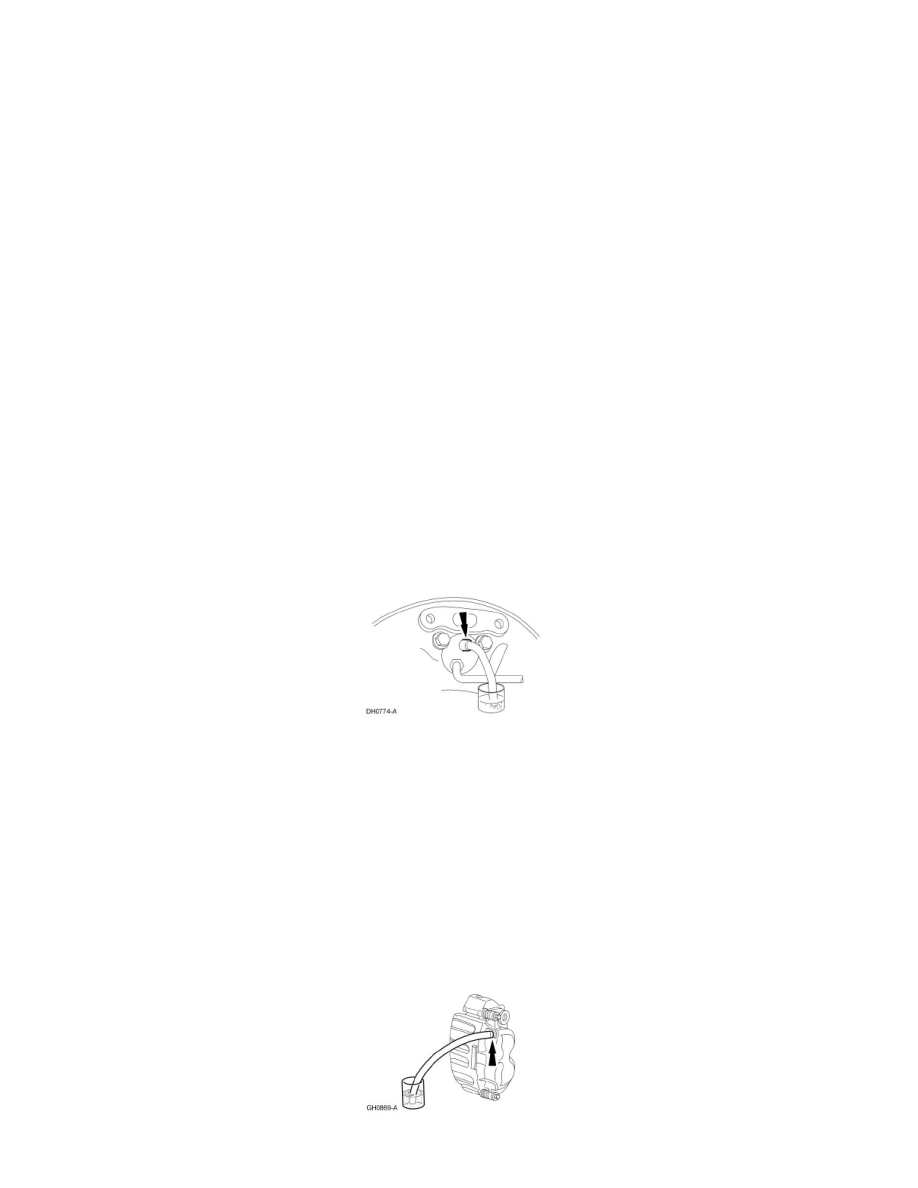Transit Connect L4-2.0L (2010)

Specifications. Remove the rubber hose.
6. Continue bleeding the rest of the system, going in order from the LR bleeder screw to the RF bleeder screw, ending with the LF bleeder screw.
-
Tighten the brake caliper and wheel cylinder bleeder screws to specifications. Refer to Specifications.
7. Close the bleeder tank valve. Remove the tank hose from the adapter and remove the adapter. Fill the reservoir with clean, specified brake fluid
and install the reservoir cap.
Manual Bleeding
WARNING: Do not use any fluid other than clean brake fluid meeting manufacturer's specification. Additionally, do not use brake fluid that
has been previously drained. Following these instructions will help prevent system contamination, brake component damage and the risk of
serious personal injury.
WARNING: Carefully read cautionary information on product label. For EMERGENCY MEDICAL INFORMATION seek medical advice. In
the USA or Canada on Ford/Motorcraft products call: 1-800-959-3673. For additional information, consult the product Material Safety Data
Sheet (MSDS) if available. Failure to follow these instructions may result in serious personal injury.
WARNING: Do not allow the brake master cylinder to run dry during the bleeding operation. Master cylinder may be damaged if operated
without fluid, resulting in degraded braking performance. Failure to follow this instruction may result in serious personal injury.
NOTICE: Do not spill brake fluid on painted or plastic surfaces or damage to the surface may occur. If brake fluid is spilled onto a painted or
plastic surface, immediately wash the surface with water.
NOTE: Pressure bleeding the brake system is preferred to manual bleeding.
1. Clean all the dirt from around the brake fluid reservoir cap and remove the cap.
-
Fill the brake master cylinder reservoir with clean, specified brake fluid.
2. Remove the RR bleeder screw cap and place a box-end wrench on the bleeder screw. Attach a rubber drain hose to the RR bleeder screw and
submerge the free end of the hose in a container partially filled with clean, specified brake fluid.
3. Have an assistant pump the brake pedal and then hold firm pressure on the brake pedal.
4. Loosen the RR bleeder screw until a stream of brake fluid comes out. While an assistant maintains pressure on the brake pedal, tighten the RR
bleeder screw.
-
Repeat until clear, bubble-free fluid comes out.
-
Refill the brake master cylinder reservoir as necessary.
5. Tighten the RR bleeder screw to specifications. Refer to Specifications. Remove the rubber hose and install the bleeder screw cap.
6. Repeat Steps 2 through 5 for the LR bleeder screw.
7. Remove the RF bleeder cap and place a box-end wrench on the bleeder screw. Attach a rubber drain hose to the RF bleeder screw and submerge
the free end of the hose in a container partially filled with clean, specified brake fluid.
8. Have an assistant pump the brake pedal and then hold firm pressure on the brake pedal.
